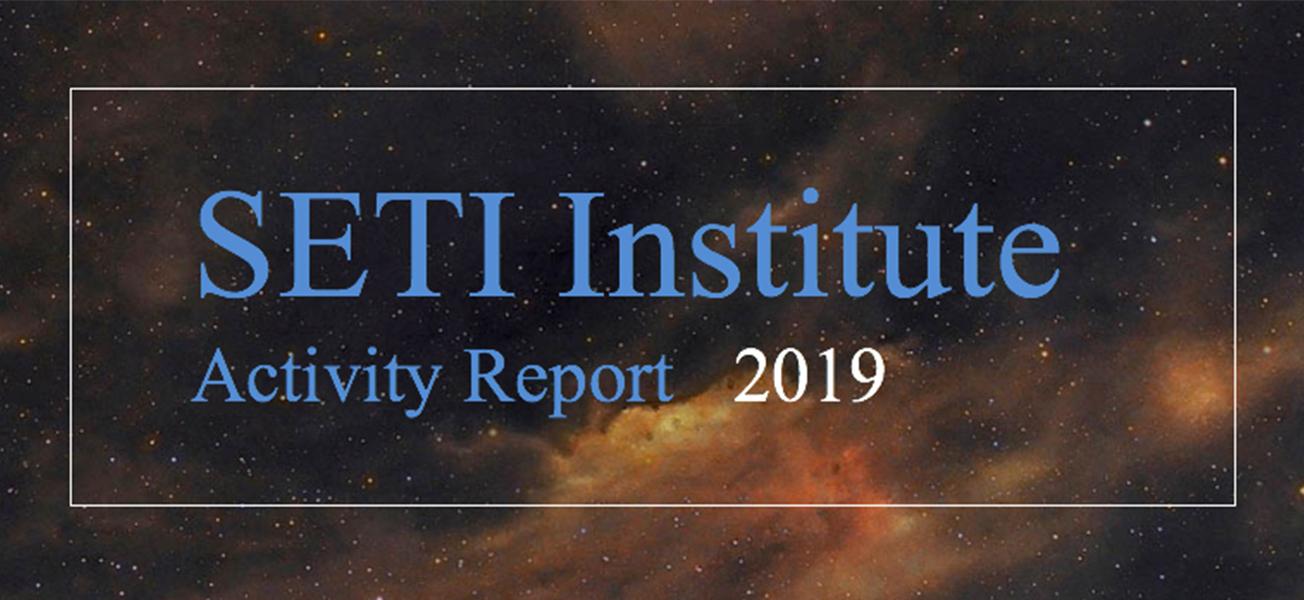
Download the SETI Institute’s 2019 Activity Report here.
This is the SETI Institute’s fourth annual activity report. It details the achievements of our 100+ scientists, along with our educators and outreach professionals throughout the year. More importantly, it chronicles the progress we made last year in advancing our mission to explore, understand and explain the origin and nature of life in the universe and the evolution of intelligence. The numbers are impressive: 242 publications in peer-reviewed journals, 356 abstracts and conference proceedings, hundreds of articles and broadcast stories about the work we do, public appearances throughout the world and so much more.
But what's most interesting are the stories behind the numbers. On January 1, 2019, we were there when New Horizons successfully executed its flyby of Kuiper Belt Object 2014 MU 60, now known as 486958 Arrokoth. Thanks to SETI Institute scientists:
- a seventh moon of Neptune was discovered;
- clues to possible Martian life were found in the Chilean desert;
- tools, instruments and equipment for planetary exploration such as the astronaut smart glove and laser Raman were tested here on Earth;
- missions including TESS, OSIRIS-REx, Parker Solar Probe, Mars 2020 and more moved forward.
The SETI Institute also embarked upon an ambitious 3-year initiative to revitalize the Allen Telescope Array (ATA) to increase the sensitivity of its receivers and permit the development of a new digital processing system.
Frontier Develop Lab (FDL) teams used machine learning and AI to tackle significant challenges in the areas of heliophysics, disaster prevention, astronaut health and lunar resources. Three more Girl Scout space science badges were released and the SETI Institute was on hand when the first badges were earned at the Girls Scouts Astronomy Destination Camp. Airborne Astronomy Ambassadors (AAA) teachers received professional development training and flew on NASA’s SOFIA, bringing curriculum on infrared astronomy back to their classrooms. Our scientists mentor future researchers and science educators through summer internships with Research Experience for Undergraduates (REU) and STEM Teacher as Researcher (STAR) programs.
SETI Institute scientists conducted fieldwork in such far-reaching places as Antarctica, Chile, Alaska and the High Arctic. They also observed the universe through telescopes at the Arecibo Observatory, the Green Bank Telescope, SOFIA, the Hubble Space Telescope and more. And they received honors and recognition for their accomplishments from organizations including NASA, the American Association for the Advancement of Science (AAAS), the Canadian Astronomical Society and the Institute of Electrical and Electronics Engineers (IEEE).
At the SETI Institute, we strive every day to answer the question, “Are we alone?” Our scientists are unlocking the secrets of the universe while at the same time our Center for Education is fostering future leaders to further our work and our Center for Outreach inspires millions.
Learn more about what we did in 2019 here. And stay tuned for what we’ll be doing in the coming year.





